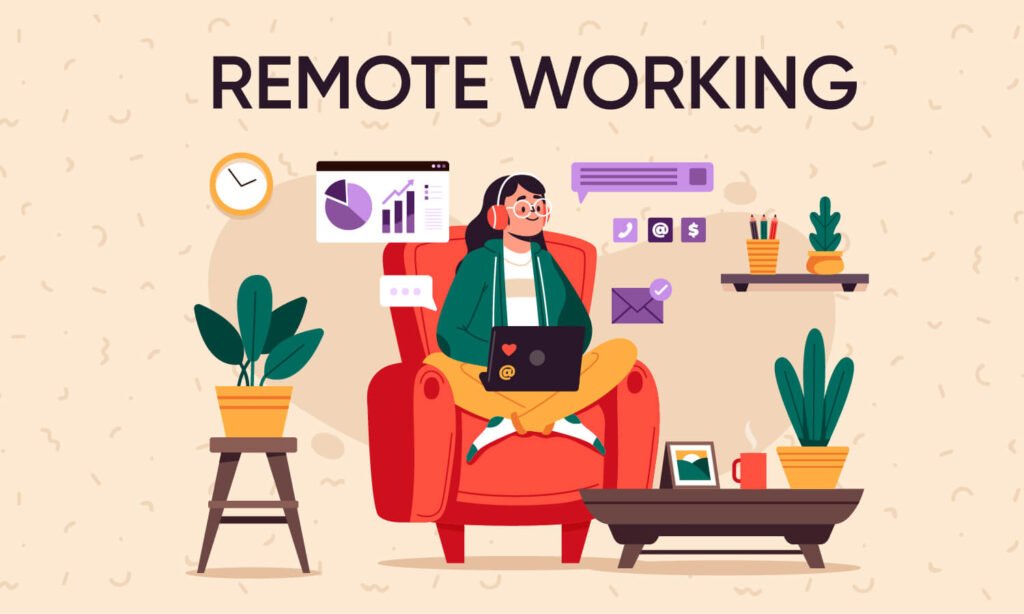Picture this: you’ve just settled into your favorite spot at a bustling coworking space, laptop open, coffee steaming, ready to tackle your day’s agenda. Suddenly, someone’s phone conversation becomes your unwanted soundtrack, another member has claimed half the communal table with their belongings, and the person next to you is typing with the intensity of a woodpecker. Sound familiar? Welcome to the wild west of shared workspaces, where coworking etiquette can make or break your productivity.
As the coworking industry continues its explosive growth—with over 40,000 coworking spaces worldwide as of 2023—millions of professionals are navigating the delicate dance of shared workspace dynamics. According to recent data from Coworker.com, 89% of coworking members report higher happiness levels when proper etiquette is observed, while 76% cite poor workspace behavior as their primary frustration. The truth is, mastering coworking etiquette isn’t just about being polite; it’s about creating an environment where everyone can thrive, innovate, and build meaningful professional connections.
Essential Coworking Etiquette Rules Every Remote Worker Should Know
The foundation of successful coworking lies in understanding that shared spaces operate on mutual respect and consideration. Unlike traditional offices with established hierarchies and rules, coworking environments depend entirely on members’ collective commitment to maintaining a professional, productive atmosphere.
The golden rule of noise management tops every coworking etiquette list. Research from the International Journal of Environmental Research and Public Health shows that noise levels above 55 decibels significantly impact cognitive performance. This means keeping conversations at library-level volumes, using headphones for music or videos, and being mindful of keyboard noise. When you must take a call, step into designated phone booths or quiet areas.
Space allocation represents another critical aspect of coworking courtesy. The “one person, one seat” principle should guide your workspace selection. Avoid spreading belongings across multiple seats unless you’ve reserved additional space. When using communal tables, respect the invisible boundaries that separate your workspace from your neighbors’. A good rule of thumb: if your belongings extend beyond arm’s reach, you’re likely encroaching on someone else’s territory.
Personal hygiene and food etiquette significantly impact the shared experience. Strong-smelling foods, excessive perfumes, or poor personal hygiene can create uncomfortable situations for nearby members. Opt for neutral-scented meals and be conscious of how your choices affect the immediate environment. Remember, what seems minor to you might be a major distraction for someone trying to concentrate on important work.
Mastering Shared Space Coworking Etiquette for Maximum Productivity
Creating a harmonious shared workspace requires strategic thinking about how your actions ripple through the community. The most successful coworking members understand that productivity isn’t just individual—it’s collective. When everyone follows proper etiquette, the entire space becomes more efficient and enjoyable.
Technology etiquette plays a crucial role in modern coworking environments. Keep your devices on silent mode or use subtle vibration settings. Screen brightness should be adjusted to avoid disturbing neighbors, especially in darker spaces. When participating in video calls, position your screen to prevent others from inadvertently appearing in your background. Many coworking spaces now provide Zoom rooms or private booths specifically for this purpose.
The concept of “productive presence” involves being fully engaged while remaining considerate of others. This means avoiding disruptive activities like loud typing, excessive movement, or frequent interruptions of your neighbors’ workflow. If you need to collaborate with team members, utilize designated collaboration areas rather than attempting group work in quiet zones.
Timing awareness extends beyond basic punctuality to understanding the natural rhythms of coworking spaces. Most locations experience peak hours between 10 AM and 3 PM, when finding quiet spaces becomes challenging. Arriving early or staying later can provide access to premium spots while demonstrating respect for community dynamics. Additionally, understanding your own work patterns—whether you’re most productive during busy or quiet periods—helps you choose appropriate times for different types of tasks.
Phone Calls and Video Conferences in Coworking Spaces
Nothing tests coworking etiquette quite like phone calls and video conferences. These necessary evils of modern work can either seamlessly integrate into the coworking environment or completely disrupt the productivity of dozens of nearby members. The key lies in preparation, positioning, and consideration.
Pre-call preparation should begin the moment you know a call is scheduled. Survey your coworking space for designated phone areas, quiet zones, or bookable meeting rooms. Many established coworking brands like WeWork provide soundproof phone booths specifically for this purpose. If no dedicated areas exist, identify the least disruptive locations—typically near building entrances or in transitional spaces where brief conversations are expected.
The five-minute rule provides excellent guidance for phone etiquette: calls under five minutes can often be taken from your workspace if conducted quietly and considerately, while longer calls or video conferences require relocation to appropriate areas. This rule acknowledges that brief, professional exchanges are part of modern work while protecting the community from extended disruptions.
- Use noise-canceling headphones with built-in microphones for clearer communication
- Position yourself facing away from main work areas during calls
- Keep personal calls to absolute minimum and take them outside when possible
- Book meeting rooms in advance for scheduled video conferences
- Have backup plans for technical difficulties that might require troubleshooting
Emergency call protocols deserve special consideration. When urgent calls arise unexpectedly, discretely exit your immediate work area before answering. A simple gesture toward your phone and an apologetic expression to nearby members acknowledges the disruption while demonstrating respect for their concentration. For those following effective remote work practices, maintaining professional call standards becomes even more critical in shared environments.
Kitchen and Common Area Protocol That Builds Community
Coworking space kitchens and common areas serve as the heart of community interaction, where professional relationships often begin and workspace culture takes shape. These shared facilities require heightened attention to etiquette, as they’re used by every member and reflect the overall standards of the community.
The “leave it better than you found it” principle governs all common area interactions. This extends beyond basic cleanliness to include restocking supplies, wiping surfaces, and ensuring appliances are ready for the next user. Studies from workplace psychology research indicate that well-maintained common areas correlate directly with member satisfaction and retention rates.
Refrigerator etiquette presents unique challenges in coworking environments. Label all items clearly with your name and date, respect expiration dates religiously, and never consume items that don’t belong to you without explicit permission. The “48-hour rule” works well: if unlabeled items remain after 48 hours, they’re typically considered abandoned. However, always check with coworking space management before disposing of questionable items.
Coffee station protocol requires special attention, as caffeine often fuels coworking productivity. If you finish a pot, start a new one. Clean up spills immediately. If you’re using specialty creamers or sweeteners, consider sharing or at least asking nearby members if they’d like some. These small gestures build community connections and demonstrate consideration for fellow members.
Microwave and appliance usage follows standard shared kitchen etiquette: clean up spills, avoid strong-smelling foods, and don’t monopolize equipment during peak hours. Cover food to prevent splattering, and if something requires extended cooking time, use a timer and stay nearby rather than returning to your workspace and potentially forgetting about it.
Professional Networking Etiquette Without Being Intrusive
Coworking spaces naturally facilitate professional networking, but the line between opportunity and intrusion can be surprisingly thin. Successful networkers in shared workspaces master the art of organic relationship building while respecting others’ focus and productivity needs.
Reading social cues becomes essential in coworking environments. Members wearing headphones, deeply focused on their screens, or clearly engaged in time-sensitive work should not be interrupted for networking conversations. Instead, look for natural networking opportunities during breaks, in common areas, or during designated community events that many coworking spaces organize monthly.
The introduction approach in coworking spaces differs significantly from traditional networking events. Rather than formal business card exchanges, successful coworking networkers rely on casual, context-appropriate interactions. Commenting on someone’s interesting project (if overheard naturally), offering help with technical issues, or sharing relevant resources demonstrates value before requesting connections.
- Attend organized networking events and community gatherings
- Participate in coworking space Slack channels or online communities
- Offer expertise or assistance before asking for favors
- Respect people’s work schedules and deadlines
- Follow up professionally without being persistent
The “coffee invitation” strategy works particularly well in coworking environments. Instead of attempting lengthy conversations at someone’s workspace, suggest continuing discussions over coffee in the common area or at a nearby café. This approach respects their current work while showing genuine interest in professional connection. For digital nomads exploring exciting workation destinations, building networks in temporary coworking spaces requires even more finesse and cultural sensitivity.
Respecting Personal Workspace Boundaries in Open Environments
Open coworking environments present unique challenges for maintaining personal boundaries while fostering community interaction. Unlike private offices with clear physical barriers, shared workspaces rely on invisible boundaries that require constant awareness and respect from all members.
Visual privacy becomes paramount in open layouts where screens are often visible to multiple people. Position your monitor to minimize shoulder surfing opportunities, especially when handling sensitive information. The 45-degree rule suggests angling screens away from main walkways and neighboring workstations. When working with confidential materials, consider booking private offices or positioning yourself in corners with natural privacy barriers.
Personal belongings management reflects both organizational skills and consideration for others. Limit personal items to what’s necessary for your workday, and keep belongings contained within your designated space. Expensive equipment should be secured when stepping away, as most coworking spaces operate on community trust but can’t guarantee security for personal property.
The concept of “borrowed space” helps frame appropriate behavior in coworking environments. Unlike permanent offices, coworking spaces are temporarily yours during business hours. This perspective encourages lighter footprints, easier transitions, and greater consideration for the next person who might use your space. Avoid permanent modifications, excessive personalization, or treatments that assume long-term occupancy.
Interruption protocols require delicate balance between accessibility and productivity. Establish visual cues that indicate your availability: open posture and occasional eye contact suggest approachability, while headphones and focused body language signal concentration. When you need to interrupt someone, wait for natural pause points, make eye contact, and ask if it’s a good time rather than launching into your request immediately.
Advanced Coworking Etiquette for Seasoned Digital Nomads
Experienced coworking members and digital nomads develop sophisticated etiquette strategies that go beyond basic courtesy to actively enhance the community experience. These advanced practices separate workspace tourists from true coworking ambassadors who contribute meaningfully to shared environments.
Cultural adaptation becomes crucial for international coworkers and nomads working across different regions. Business communication styles, personal space expectations, and social interaction norms vary significantly between cultures. What’s considered friendly engagement in one culture might feel intrusive in another. Successful global coworkers spend their first few days observing local customs before fully engaging with community activities.
Technology leadership involves staying current with coworking space digital infrastructure while helping less tech-savvy members navigate systems. This includes understanding Wi-Fi networks, printing procedures, booking systems, and integrated productivity tools. Experienced members often become informal tech support, which builds community goodwill while establishing professional credibility.
Mentorship opportunities naturally arise in diverse coworking communities. Seasoned professionals can offer guidance to newer members, freelancers, or entrepreneurs without formal mentoring commitments. This might involve sharing industry insights during casual conversations, recommending useful tools or resources, or providing feedback on projects when requested. The key is offering help without imposing advice or assuming others want guidance.
Event participation and community building represent advanced coworking citizenship. Beyond attending organized events, experienced members often propose new activities, facilitate introductions between members with complementary skills, or organize informal gatherings that strengthen community bonds. These contributions create the vibrant, collaborative atmosphere that distinguishes exceptional coworking spaces from mere shared offices.
When Coworking Etiquette Goes Wrong and How to Handle Conflicts
Even well-intentioned coworking communities occasionally experience etiquette breakdowns that require diplomatic resolution. Understanding how to address problems professionally while maintaining positive relationships separates mature coworking members from those who either suffer in silence or create unnecessary drama.
The escalation ladder provides a structured approach to addressing etiquette violations. Start with non-verbal cues: adjusting your position, using headphones, or creating subtle barriers that indicate discomfort. If problems persist, progress to polite direct communication, focusing on specific behaviors rather than personal characteristics. “I’m having trouble concentrating with the current noise level” works better than “you’re being too loud.”
Documentation becomes important for recurring issues or serious violations. Note specific incidents, times, and impacts on your work. Most coworking spaces have community managers or operations staff who can address persistent problems diplomatically. When approaching management, focus on how issues affect productivity rather than personal grievances.
The “benefit of the doubt” principle acknowledges that most etiquette violations result from misunderstanding rather than malicious intent. New members might not understand space-specific protocols, international members might have different cultural expectations, or someone might be dealing with personal stress that affects their usual consideration. Approaching conflicts with curiosity rather than anger often leads to better outcomes.
- Address issues promptly before they escalate
- Focus on behaviors and impacts rather than personalities
- Seek win-win solutions that work for everyone involved
- Know when to involve community managers or staff
- Have backup workspace options for particularly disruptive days
Sometimes the most professional response is strategic avoidance. This doesn’t mean tolerating inappropriate behavior, but rather choosing battles wisely and maintaining your productivity despite others’ inconsideration. Noise-canceling headphones, alternative workspace locations, and flexible scheduling can minimize impacts while conflicts are resolved through appropriate channels.
Mastering coworking etiquette transforms shared workspaces from potential stress sources into thriving professional communities where everyone can achieve their best work. The principles outlined here—from basic courtesy to advanced community building—create environments where productivity and collaboration flourish simultaneously. Remember that great coworking etiquette isn’t about following rigid rules, but about developing sensitivity to how your actions impact others and choosing behaviors that elevate the entire community experience.
The investment in proper coworking etiquette pays dividends far beyond immediate workspace harmony. Professional relationships formed in respectful, well-managed coworking environments often lead to business opportunities, career advancement, and meaningful collaborations that extend well beyond any single workspace. As the global shift toward flexible work continues, those who master these essential interpersonal skills will find themselves welcome in coworking communities worldwide.
Start implementing these etiquette strategies during your next coworking session. Pay attention to how small changes in your behavior create ripple effects throughout your workspace community. Share your experiences and continue learning from fellow members who’ve mastered the art of productive, respectful coworking. Your future self—and everyone who shares workspace with you—will thank you for the effort.



